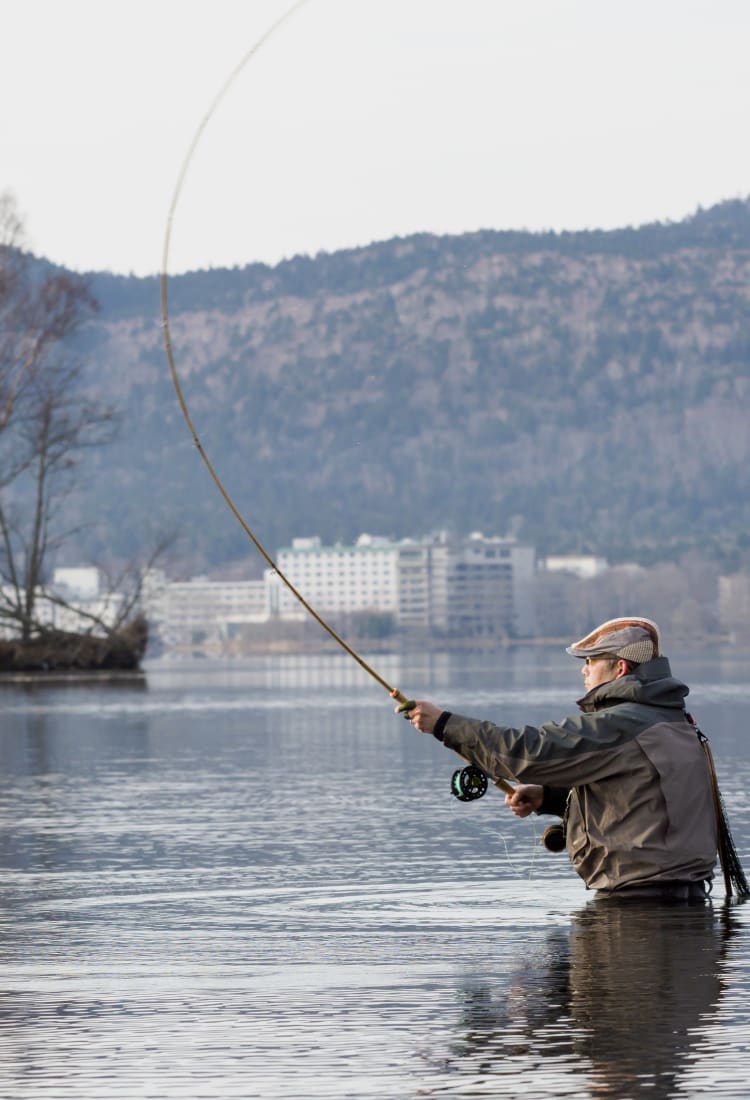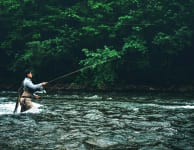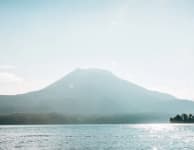Japan's diverse ecosystem is ideal for fans of fishing
Fishing in Japan started as a necessary means of subsistence, but has evolved into a popular pastime. Today, you can enjoy fly-fishing in the lakes and rivers that run through the country or head to the ocean for deep-sea fishing. Even major cities such as Tokyo and Osaka have found space for “urban fishing,” a reminder of just how influential the activity remains.
What kind of fishing can I do in Japan?
Japan's ample mountains make the country an ideal place for fly-fishing. Due to the rugged landscape and abundant snowmelt, all of the major islands have many rivers and streams perfect for casting off.
Lake Akan in the Akan-Mashu National Park in Hokkaido has a tremendous reputation for fly-fishing, and the Japan Alps near Gifu and Nagano prefectures are also notable spots. Each location has different rules for how to acquire a license (even just for the day), so make sure to check before you set out on your adventure.
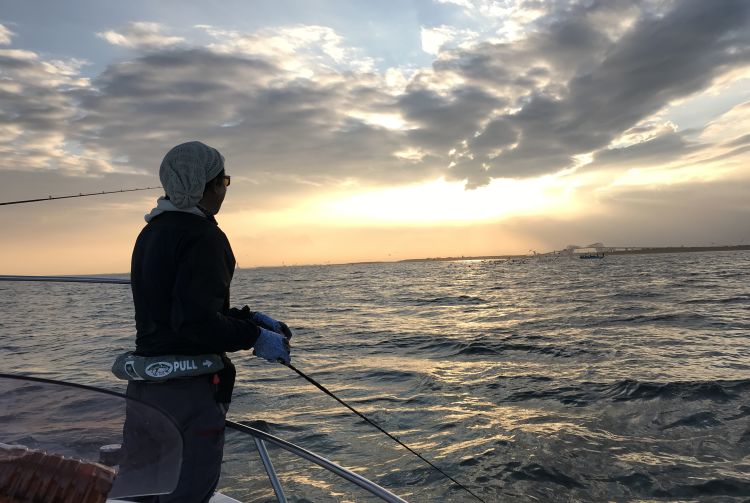
Head out into the ocean on a deep-sea fishing adventure
Japan is also a haven for deep-sea fishing. Many companies and tours operate from the coast, taking visitors out onto the waves and the chance to catch a wide variety of ocean-living creatures. Booking a tour is a practical way you can enjoy fishing on the open seas, as going out on your own will be pretty tricky. However, the tour organizers can guide you through the process, and their local knowledge will take you to promising spots.

Make sure you have the necessary permits for fishing in Japan
How can I go fishing in Japan?
Fishing in Japan requires a little preparation. Generally, you will need to obtain some sort of permit or license, even if it lasts for just one day. Thankfully, plenty of English-speaking tour companies operate across Japan that will take care of these details for you.

Japan's rivers are great spots for fly-fishing
Fly-fishing
Trout & King Fishing Tours organize fly-fishing trips all over the country, including trips to Hokkaido. They also are open to offering customized experiences for customers. Another option is Far East Outfitters.
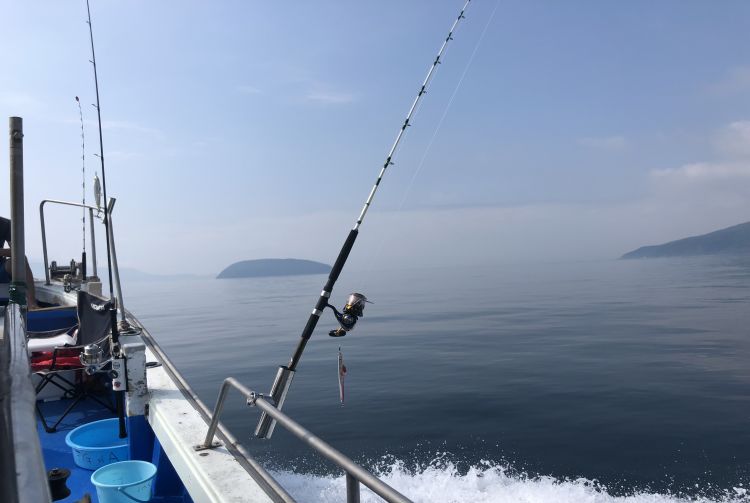
Head out to sea on a chartered fishing tour
Deep-sea fishing
Bassin' Heaven's Tokyo Fishing Guide Service organizes trips all year long near the capital. EGA Fish Japan Charter Tours offers free fishing charters to active or retired military personnel visiting Japan, with tours in the waters near Iwakuni in Yamaguchi Prefecture.
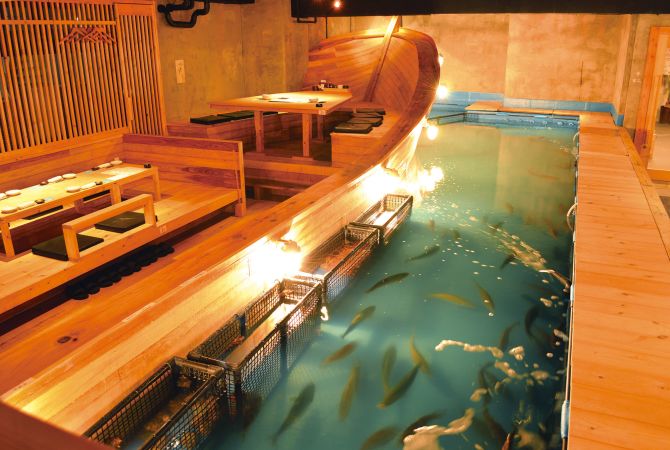
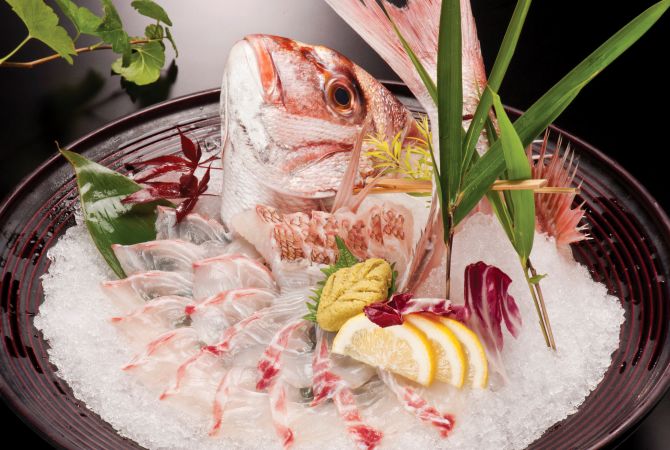
Fishing restaurants make for a fun evening
What is urban fishing?
Japanese cities offer opportunities for urban fishing. Urban fishing centers are essentially small bodies of water stocked with fish where visitors pay a small amount to try to catch something. Indoor fishing venues dot most big towns too, while fishing restaurants are also taking off. Zauo is a popular restaurant where customers can catch their own dinner from the pool in the restaurant. Once you have caught one, chefs will prepare it for you.
What about traditional fishing methods?
Fishing has been present in Japan for centuries, and over that time the country has developed their own styles that are still practiced today. One such method is called ukai, where trained cormorant birds help anglers capture river fish. It's famous in Gifu City , and can be viewed on the Nagaragawa River from May to October. It also takes place in Kyoto and Uji from July to September.
Tenkara, is a variant of fly-fishing emphasizing pure fishing technique over complicated equipment. This approach has been around for more than a hundred years. Fishers use very simple equipment; just a long and flexible rod. Tenkara has become very popular.
One final variety is called dobu. It's another take on freshwater fly-fishing that features a big rod, but it is more about delicately angling the lure in and, thanks to a weight attached to the other end, letting it sink down. This style is mostly used to catch ayu.




















































